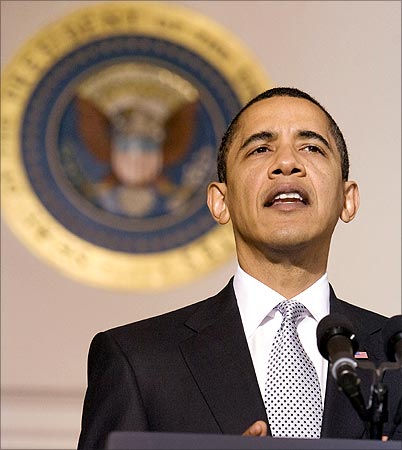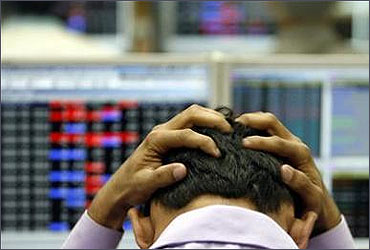Photographs: Reuters BankBazaar.com
There is a lot of buzz being generated all over the world over the debt-ceiling issue of the United States of America. Not a single day goes without a front-page article on the issue.
Here we try to give you a basic understanding of the whole issue and give insights into the Indian scenario as well.
What does the debt ceiling mean?
In simple terms, it is the maximum amount that the government can borrow to fund its day-to-day functioning.
The current debt ceiling of the US government is at $14.294 trillion. This means that the US government cannot borrow more than this limit without the permission of the Congress.
. . .
Does India have the money to repay its debt?
Photographs: Reuters
So what?
Today the US is faced with a situation where it does not have money to repay its debtors nor to run the day-to-day expenses of the government. This means it has to borrow to keep the ship sailing.
However, since it has already used up the limit, it is in a quandary. Borrowing more means more debt, not borrowing could well mean defaulting on payments!
Why has this happened?
It all boils down to simple math. Spend lesser than what you earn. But in the eagerness to boost the American economy's growth, the US government has borrowed more and spent more.
Correspondingly the income/revenue have not risen. A few of the reasons are the increased expenses for the wars that America is fighting in Asia and also cutting taxes for the super rich.
. . .
Does India have the money to repay its debt?
Photographs: Reuters
What is the way out?
A very practical way out is to cut total spending so that the gap between income and expenditure reduces and the government does not need to borrow.
Nevertheless, this is a very tricky situation as trying to cut spending means taking the risk of depressing growth!
The only other way is to borrow more and stay afloat till the effects of expenditure cuts trickle down or incomes increase.
. . .
Does India have the money to repay its debt?
Photographs: Reuters
The India story
The Indian government does not have a debt ceiling in a manner of speaking. Rather, the annual Union Budget sets a target on the fiscal deficit.
The target for 2011-12 is 4.6 per cent of the GDP (Gross Domestic Product).
This means that the government can spend 4.6 per cent of the GDP more than what it is going to earn as income.
. . .
Does India have the money to repay its debt?
Photographs: Reuters
Recent estimates have pegged the Indian GDP at Rs 90 lakh crore (approximately $2 trillion).
Current Indian debt is around Rs 40 lakh crore (about $0.9 trillion).
The current budget has estimated an income of Rs 10.5 lakh crore (Rs 10.5 trillion) and expenditure of 12.57 lakh crore (Rs 12.57 trillion). A deficit of around Rs 2.07 lakh crore ($0.05 trillion).
The above numbers mean that India has borrowed an amount equivalent to close to 45 per cent of its GDP. Or, to put it in other terms, the Government of India has borrowed four times its annual income.
. . .
Does India have the money to repay its debt?
Photographs: Reuters
However, its expenses exceed income meaning that every year the outstanding debt is only increasing.
So why is no one worried?
The funny part is all of this has to do with the play of words.
When we calculate in pure numbers we calculate deficit as (income minus expenditure), but when quoting it as a percentage the government talks of it as a percentage of the GDP, which is a much larger number, and hence the deficit seems less (4.5 per cent).
The actual deficit is Rs 2.07 crore divided by Rs 10.5 lakh crore or close to 20 per cent!
. . .
Does India have the money to repay its debt?
Photographs: Reuters
Food for thought? Well, forget about the US, we are not in a great situation either. Where is the government going to find the money to repay its loans when it does not have money to run the daily show!
Moral of the story: Although one of the fundamental rules of debt management and financial management dictates that one avoid borrowing to repay another borrowal, most governments have ignored it.
The US might be facing the heat. India is not far away from facing the heat either!








article